
Meigs syndrome
Meigs syndrome: Triad of ascites with hydrothorax in association with benign ovarian tumor, that is cured after tumor resection. Described in 1934 by Joe Vincent Meigs (1892-1963)

Meigs syndrome: Triad of ascites with hydrothorax in association with benign ovarian tumor, that is cured after tumor resection. Described in 1934 by Joe Vincent Meigs (1892-1963)

Joe Vincent Meigs (1892-1963) American gynaecologic oncology. Meigs syndrome, radical hysterectomy innovations and validation of Pap smear screening.
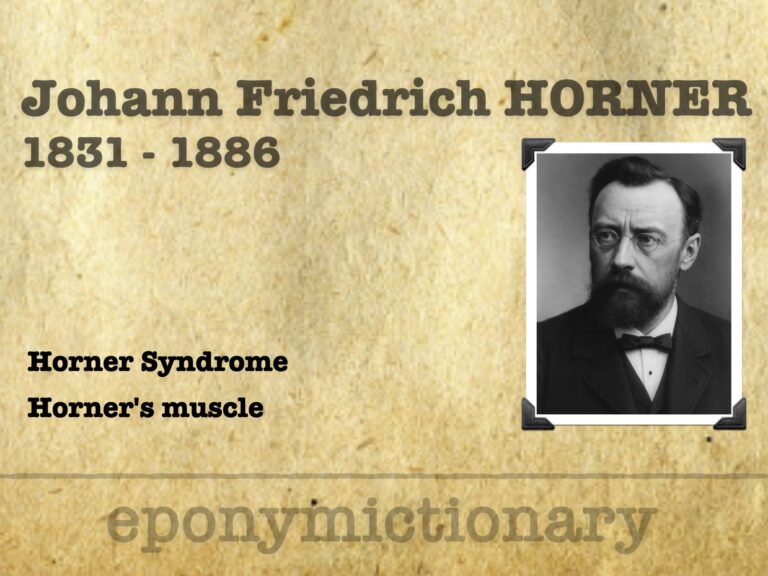
Swiss ophthalmologist Johann Friedrich Horner (1831–1886), eponym of Horner's syndrome, advanced ophthalmic surgery and neuroanatomical diagnostics
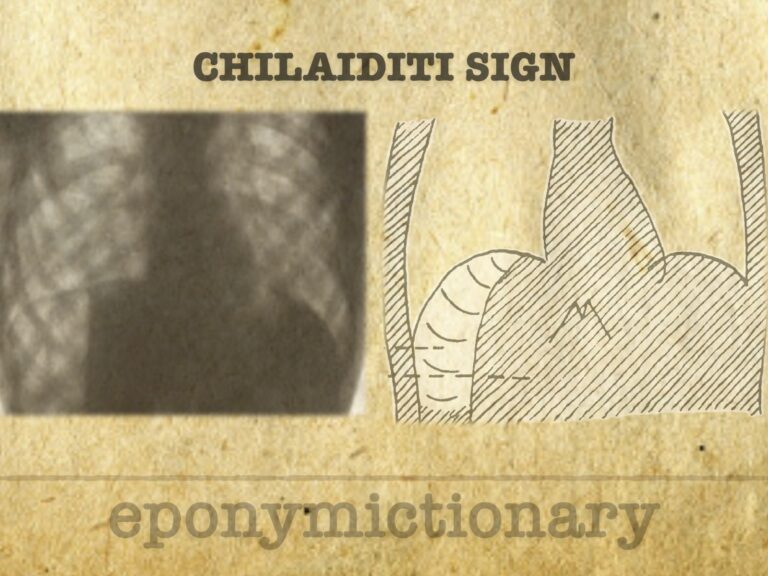
Chilaiditi sign: rare condition with bowel loops interposed between liver and diaphragm, with symptoms (syndrome). Must differentiate from free air.
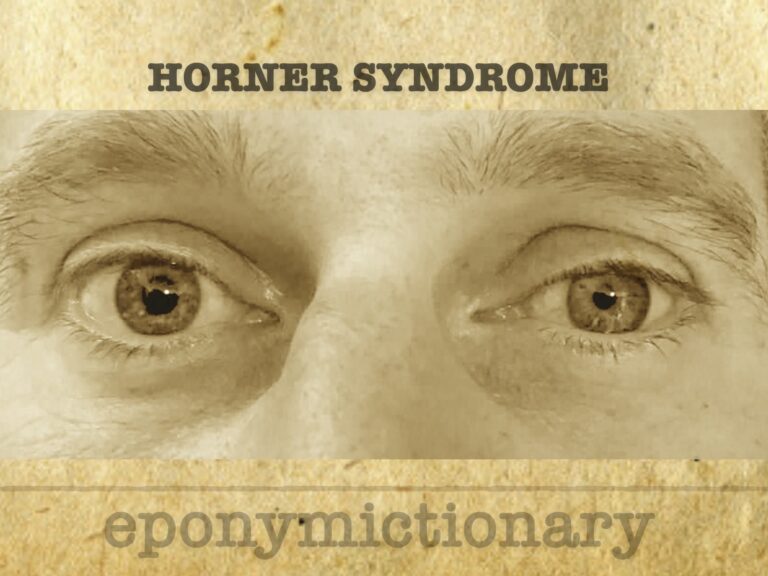
Horner syndrome is associated with an interruption to the sympathetic nerve supply of the eye. It is characterized by the classic triad of miosis, partial ptosis, and anhidrosis +/- enophthalmos

A. F. Stanley Kent (1863–1958), cardiac physiologist; 'bundle of Kent', shaped early electrophysiology; pioneered industrial fatigue science
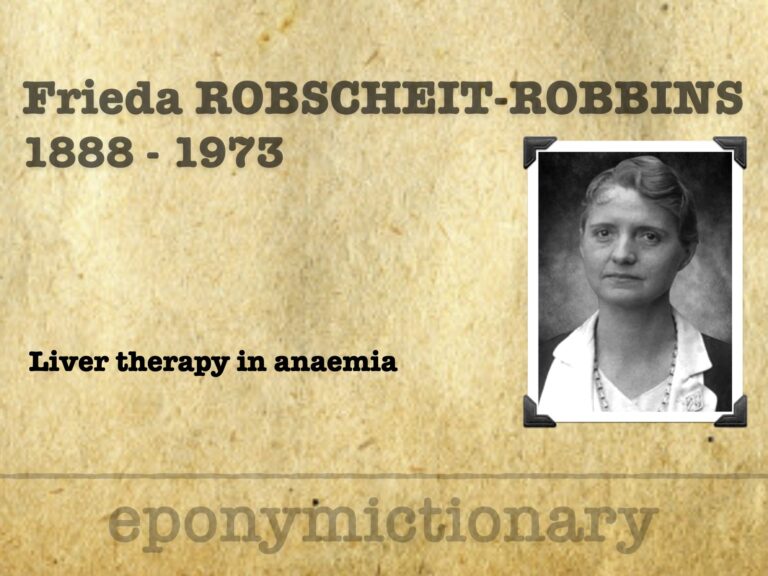
Frieda Robscheit-Robbins (1888–1973), pioneering pathologist who advanced aneamia research, yet was overlooked for the 1934 Nobel despite major contributions.
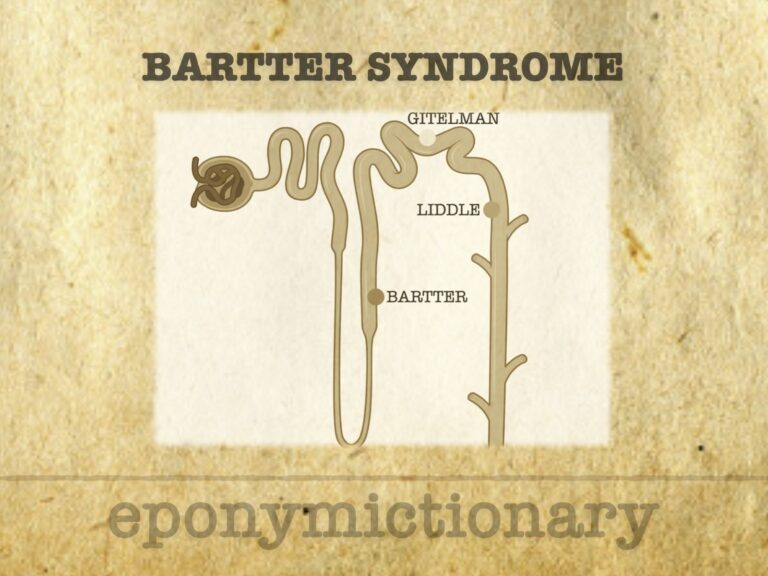
Bartter Syndrome: Renal tubulopathy with hypokalaemic alkalosis, high renin and aldosterone, normal BP, and polyuria—mimics loop diuretic effect at the thick ascending limb.
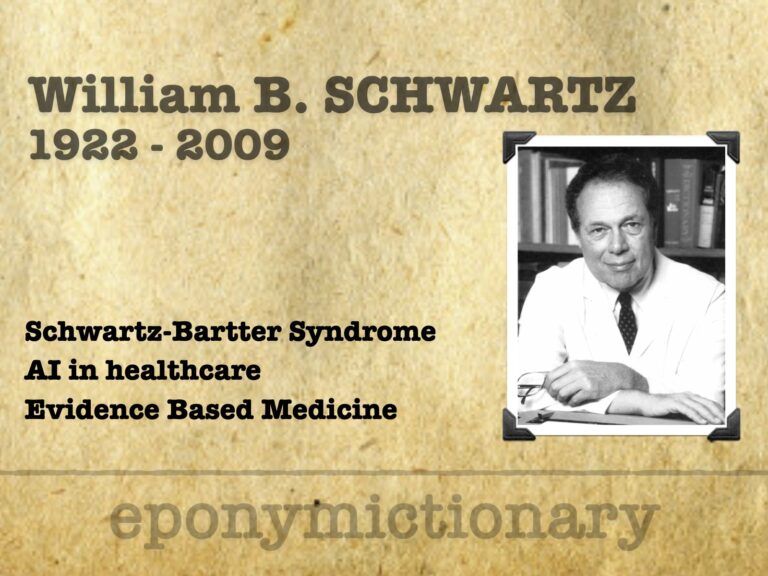
William B. Schwartz (1922–2009) American nephrologist. Co-described SIADH, pioneered decision theory, medical AI, and ethical health care rationing.
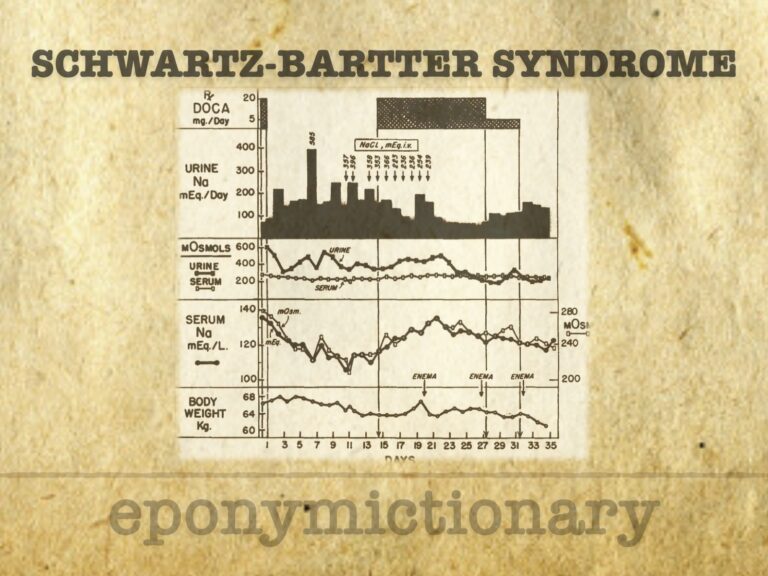
Schwartz-Bartter Syndrome (SIADH): Excess ADH leads to water retention and dilutional hyponatraemia, with low serum sodium and osmolality but inappropriately concentrated urine.
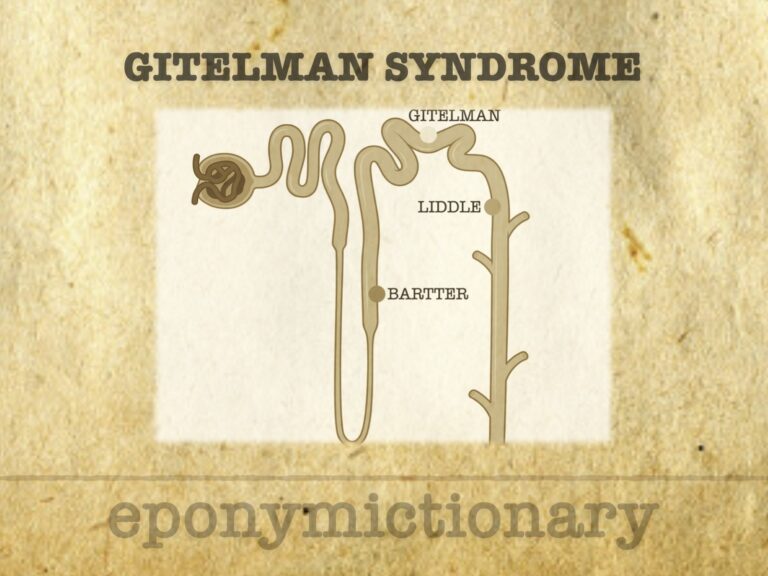
Gitelman Syndrome: Inherited defect in Na⁺-Cl⁻ cotransport in the distal tubule, causing hypokalaemia, alkalosis, hypomagnesaemia, and hypocalciuria—thiazide-like effect.
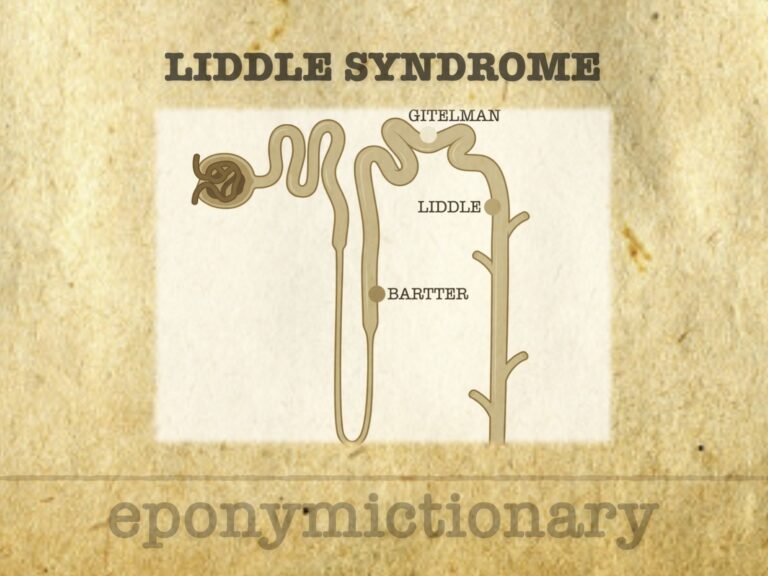
Liddle Syndrome: Monogenic hypertension due to ENaC overactivity in the collecting duct. Causes sodium retention, hypokalaemia, low renin and aldosterone—pseudo-aldosteronism.